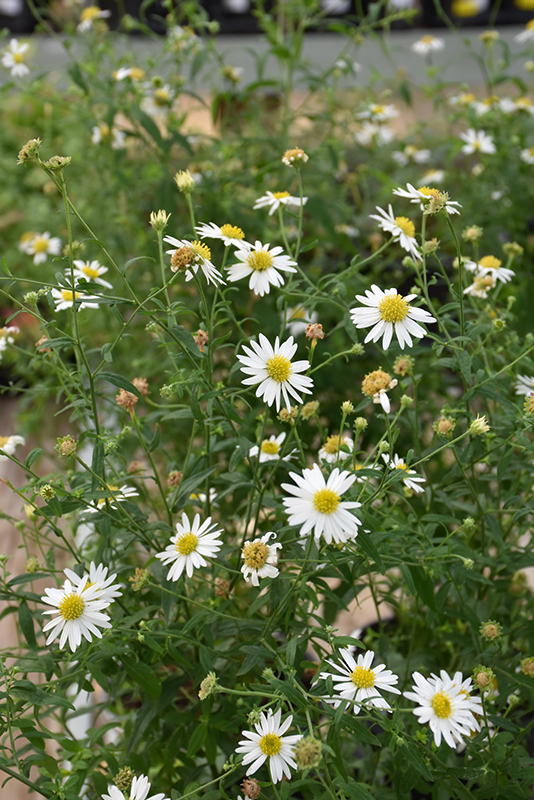Daisy Mae Japanese Aster
Kalimeris integrifolia 'Daisy Mae'
Height: 24 inches
Spacing: 24 inches
Sunlight:
![]()
![]()
Hardiness Zone: 4a
Other Names: False Aster
Description:
A long blooming variety with lush green leaves; forms a blanket of daisy-like pure white flowers with yellow centers; great for large mass plantings and border fronts; tolerates heat, humidity and drought; self-cleaning; great for cut flower arrangements
Ornamental Features
Daisy Mae Japanese Aster is blanketed in stunning white daisy flowers with yellow eyes at the ends of the stems from early summer to mid fall. The flowers are excellent for cutting. Its attractive narrow leaves remain green in color throughout the season.
Landscape Attributes
Daisy Mae Japanese Aster is a dense herbaceous perennial with a mounded form. Its relatively fine texture sets it apart from other garden plants with less refined foliage.
This is a relatively low maintenance plant, and is best cleaned up in early spring before it resumes active growth for the season. It is a good choice for attracting butterflies to your yard. It has no significant negative characteristics.
Daisy Mae Japanese Aster is recommended for the following landscape applications;
- Mass Planting
- Rock/Alpine Gardens
- Border Edging
- General Garden Use
- Container Planting
Planting & Growing
Daisy Mae Japanese Aster will grow to be about 20 inches tall at maturity, with a spread of 24 inches. When grown in masses or used as a bedding plant, individual plants should be spaced approximately 24 inches apart. Its foliage tends to remain dense right to the ground, not requiring facer plants in front. It grows at a medium rate, and under ideal conditions can be expected to live for approximately 10 years. As an herbaceous perennial, this plant will usually die back to the crown each winter, and will regrow from the base each spring. Be careful not to disturb the crown in late winter when it may not be readily seen!
This plant does best in full sun to partial shade. It is very adaptable to both dry and moist growing conditions, but will not tolerate any standing water. This plant should not require much in the way of fertilizing once established, although it may appreciate a shot of general-purpose fertilizer from time to time early in the growing season. It is not particular as to soil type or pH. It is somewhat tolerant of urban pollution, and will benefit from being planted in a relatively sheltered location. This is a selected variety of a species not originally from North America. It can be propagated by division; however, as a cultivated variety, be aware that it may be subject to certain restrictions or prohibitions on propagation.
Daisy Mae Japanese Aster is a fine choice for the garden, but it is also a good selection for planting in outdoor pots and containers. It can be used either as 'filler' or as a 'thriller' in the 'spiller-thriller-filler' container combination, depending on the height and form of the other plants used in the container planting. Note that when growing plants in outdoor containers and baskets, they may require more frequent waterings than they would in the yard or garden.
